Family : Acanthuridae

Text © Giuseppe Mazza

English translation by Mario Beltramini

Acanthurus mata in all its glory. It has a very vast distribution in the tropical Indo-Pacific and can change colour instantly for camouflaging reasons or depending on mood © Giuseppe Mazza
The Elongate surgeonfish or Yellowmask surgeonfish (Acanthurus mata Cuvier, 1829), belongs to the class Actinopterygii, the ray-finned fishes, to the order of the Perciformes and to the family of the Acanthuridae.
The name of the genus Acanthurus comes from the Greek “akantha”, thorn, and “ura” = tail, due to the spine, sharp as a razor, these animals do have on both sides of the caudal peduncle. The name of the species mata , resumes that given by the natives in India along the Coromandel Coast.
Zoogeography
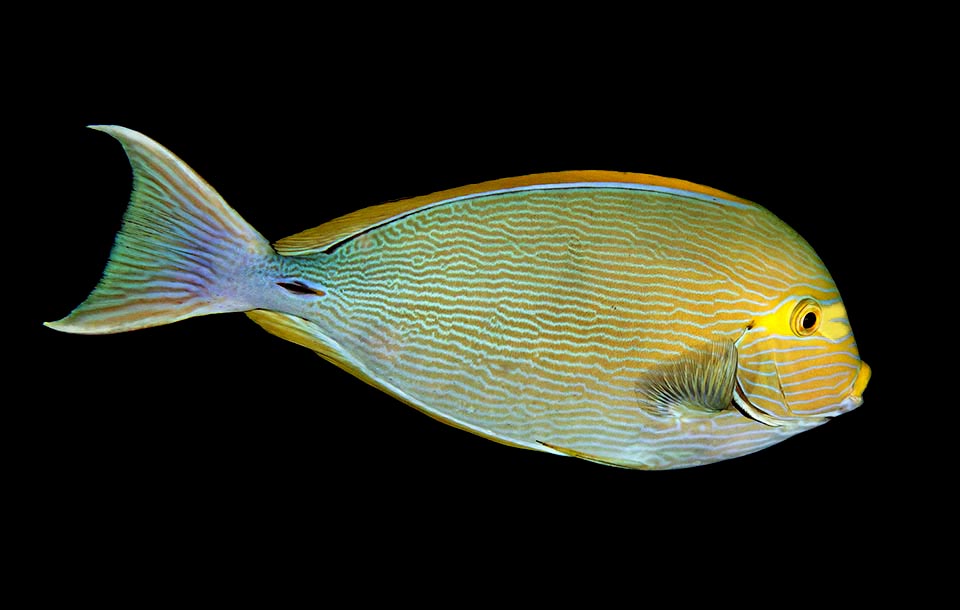
Here it is with an orange shade. Compared to the other surgeonfishes, the body is longer. Characteristic and constant in all liveries is the yellow small mask around the eyes © Rickard Zerpe
It has a very vast distribution in the tropical Indo-Pacific.
Starting from the Red Sea and from South Africa, it reaches eastwards the Marquesas and Tuamotu Islands, northwards, Japan and southwards New Caledonia.
Ecology-Habitat
It is associated with the madreporic formations, and even if going down along the outer ridges of the reefs it may reach the depth of 100 m, it usually goes swimming between the 5 and the 45 m. It does not disdain the murky waters it often frequents looking for plankton and debris.
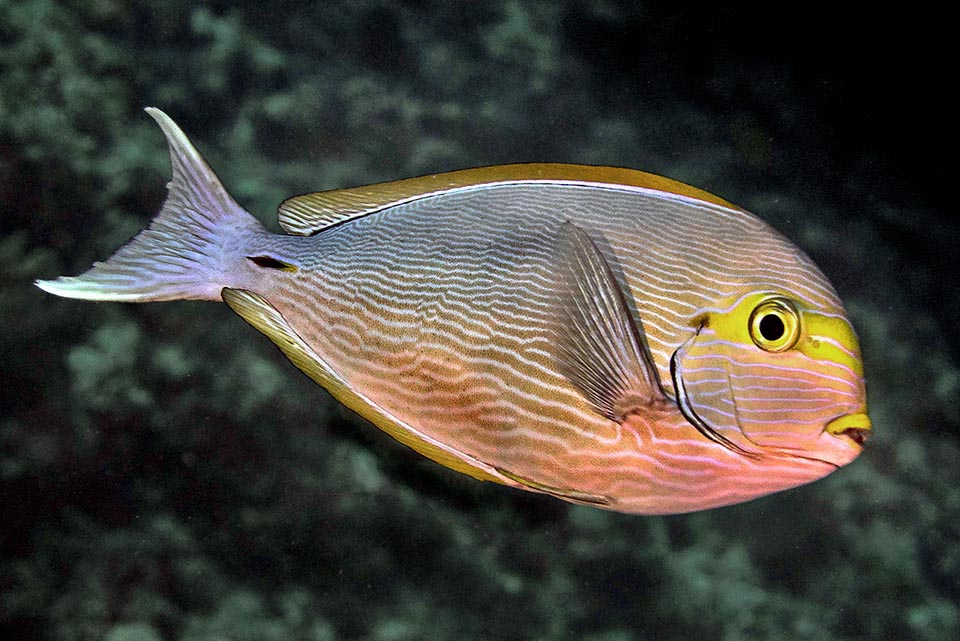
Here the red colour predominates. Due to the size that may reach 50 cm, in some locations like Thailand and Philippines it is caught for food purposes © Rafi Amar
Morpho-physiology
It reaches the length of half metre with flat, oval body, somewhat more slender than usual.
It has only one great dorsal fin with 9 spiny rays and 24-26 soft ones. The anal is symmetric but shorter, with 3 spiny rays and 23-24 unarmed ones. The pectoral fins have 16-17 rays, the ventral 1 spine and 5 soft rays. The caudal fin, trimmed, tends with age to get long on the sides. The jaws of the adults have 24 small teeth above and 28 below.
The scales are tiny and the livery is quite variable depending on the camouflaging exigences and the mood of the fish. The light blue horizontal arabesque on reddish brown background, may in fact get paler and disappear instantly to leave the place to a pale and uniform bluish livery.
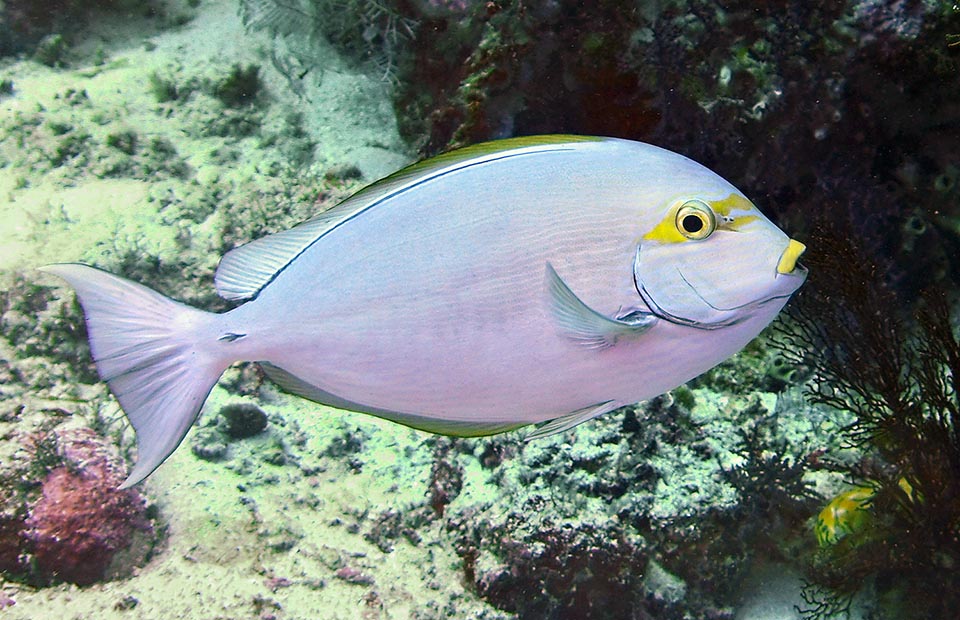
The horizontal arabesque at times disappears almost completely as in this pink version. It eats zooplankton, but also small benthic invertebrates, vegetables and debris © Karine Marangon
More stable are the typical yellow stripes around the eye: two parallel on the front and one between the eye and the operculum, as highlights the vulgar name of yellowmask surgeonfish.
Like for Acanthurus chirurgus, the retractile sharp blades of the caudal peduncle are dangerous for man.
Ethology-Reproductive Biology
The Acanthurus mata may exceed the 20 years of life and the reproduction occurs in group, usually during the full moon night, with the males in nuptial livery and the eggs entrusted to the currents.
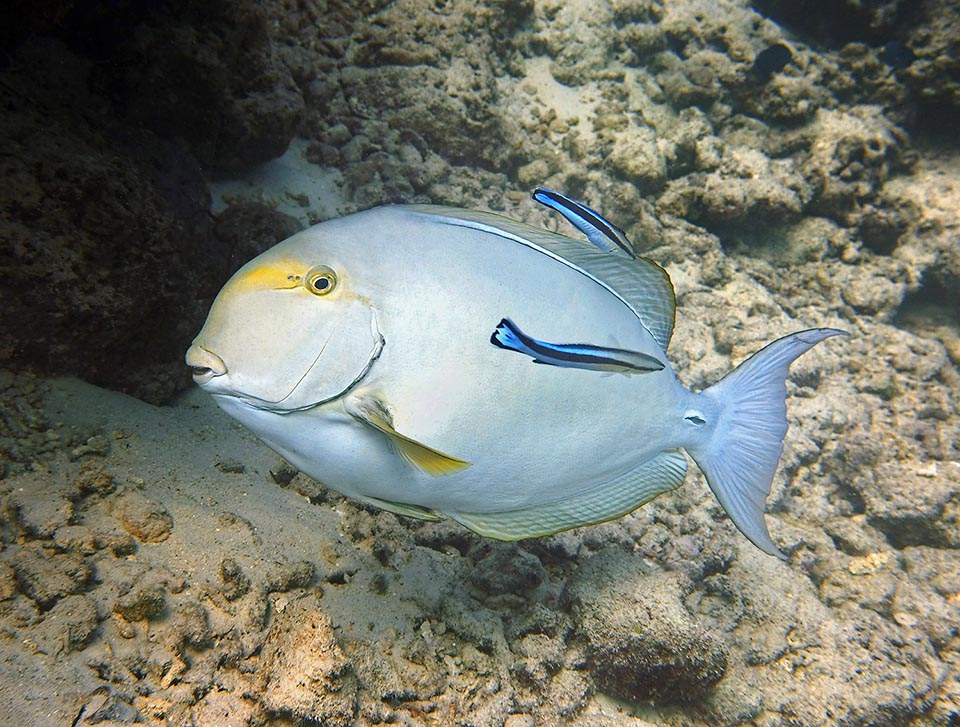
This is almost white, relaxed, while two cleaning labrids free it from skin parasites. Acanthurus mata reproduces in the night, in group, and may live more than 20 years © Karine Marangon
The young nourish of phytoplankton and of benthonic algae, the adults mainly of zooplankton, but also of small benthonic invertebrates, vegetables and debris.
In short, they eat a little of everything, so much that they have been sighted even while chasing the schools of big carnivorous fishes like the Caranx sexfasciatus in order to it eat up their feces.
Locally, especially in Thailand and Philippines, the yellowmask surgeonfish is caught for feeding purposes. As a whole, it shows a stable population but the fishing vulnerability index of the species marks already 39 on a scale of 100.
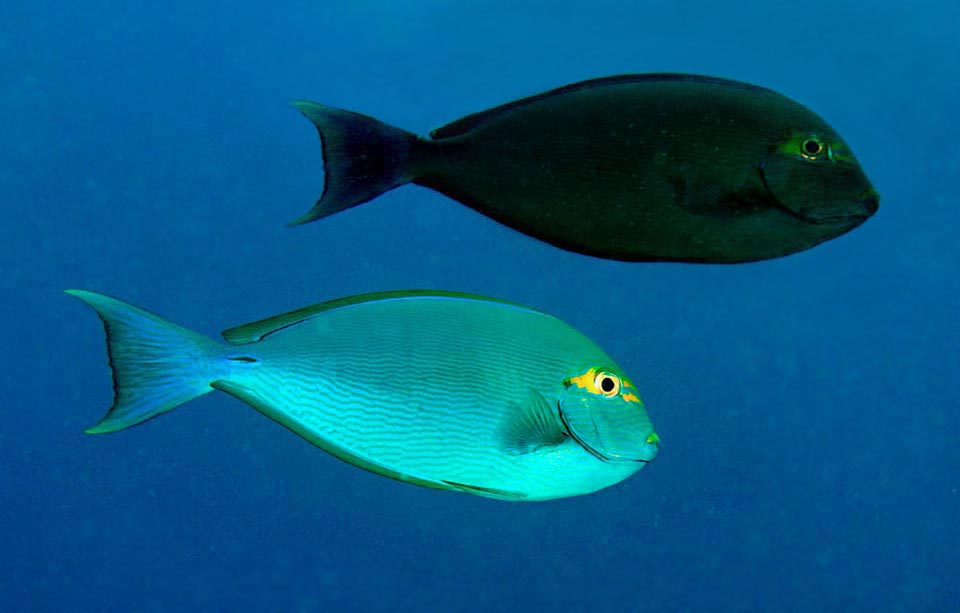
Finally there is the black livery emotionally assumed by the fish above. It’s the one used at night to rest invisible on the bottoms © Paddy Ryan
If it is true that the Acanthurus mata has a very vast diffusion and that, whatever happens, it will never have difficulty in nourishing, the resilience is unfortunately vey low: all going well, are in fact necessary 4,5 to 14 years for doubling the populations decimated by the events.
Synonyms
Chaetodon mata Cuvier 1829; Acanthurus bleekeri Günther 1861; Hepatus weberi Ahl, 1923; Acanthurus weberi Ahl, 1923.
→ For general information about FISH please click here.
→ For general information about BONY FISH please click here
→ For general information about CARTILAGINOUS FISH please click here.
→ To appreciate the BIODIVERSITY of BONY FISH please click here.
→ To appreciate the BIODIVERSITY of CARTILAGINOUS FISH please click here.
